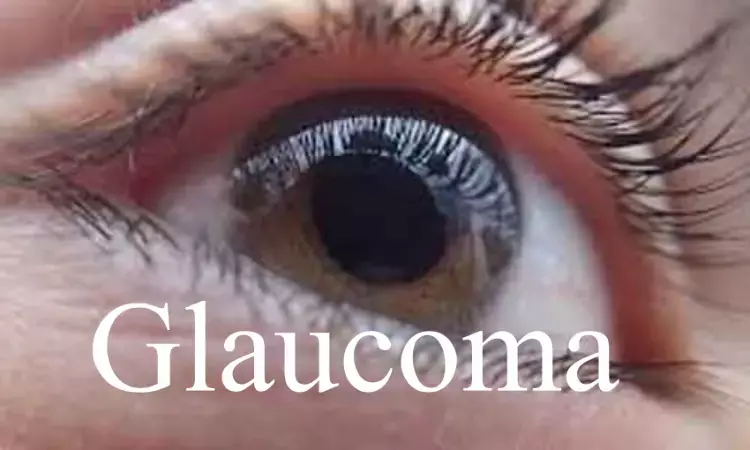- Home
- Medical news & Guidelines
- Anesthesiology
- Cardiology and CTVS
- Critical Care
- Dentistry
- Dermatology
- Diabetes and Endocrinology
- ENT
- Gastroenterology
- Medicine
- Nephrology
- Neurology
- Obstretics-Gynaecology
- Oncology
- Ophthalmology
- Orthopaedics
- Pediatrics-Neonatology
- Psychiatry
- Pulmonology
- Radiology
- Surgery
- Urology
- Laboratory Medicine
- Diet
- Nursing
- Paramedical
- Physiotherapy
- Health news
- Fact Check
- Bone Health Fact Check
- Brain Health Fact Check
- Cancer Related Fact Check
- Child Care Fact Check
- Dental and oral health fact check
- Diabetes and metabolic health fact check
- Diet and Nutrition Fact Check
- Eye and ENT Care Fact Check
- Fitness fact check
- Gut health fact check
- Heart health fact check
- Kidney health fact check
- Medical education fact check
- Men's health fact check
- Respiratory fact check
- Skin and hair care fact check
- Vaccine and Immunization fact check
- Women's health fact check
- AYUSH
- State News
- Andaman and Nicobar Islands
- Andhra Pradesh
- Arunachal Pradesh
- Assam
- Bihar
- Chandigarh
- Chattisgarh
- Dadra and Nagar Haveli
- Daman and Diu
- Delhi
- Goa
- Gujarat
- Haryana
- Himachal Pradesh
- Jammu & Kashmir
- Jharkhand
- Karnataka
- Kerala
- Ladakh
- Lakshadweep
- Madhya Pradesh
- Maharashtra
- Manipur
- Meghalaya
- Mizoram
- Nagaland
- Odisha
- Puducherry
- Punjab
- Rajasthan
- Sikkim
- Tamil Nadu
- Telangana
- Tripura
- Uttar Pradesh
- Uttrakhand
- West Bengal
- Medical Education
- Industry
Patients with highest IOP benefit most from laser therapy in glaucoma: Study

Researchers have found in a new study that selective laser trabeculoplasty (SLT) is most effective treatment for glaucoma in patients where intraocular pressure (IOP) is very high.The patients with highest pressure will benefit the most from this laser therapy, according to the new study.
Second in frequency only to cataracts, glaucoma causes more cases of blindness worldwide than any other ocular disease.
More than 70 million people worldwide suffer from glaucoma, a condition that causes a build-up of fluid and pressure inside the eye and can eventually lead to blindness.
Treatment options have traditionally included eye drops to reduce the fluid the eye produces or surgery to unclog the eye's drainage.
But a new study from the University of Missouri School of Medicine and MU Health Care provides insight into which patients might benefit most from a noninvasive treatment called selective laser trabeculoplasty (SLT), which relieves pressure by using a laser to alter the eye tissue, resulting in better fluid drainage.
"There's been a lack of evidence about how well SLT works, how safe it is and the ideal candidate," said senior author Jella An, MD, an assistant professor of ophthalmology and a fellowship-trained glaucoma specialist at MU Health Care's Mason Eye Institute. "Because so little is known about SLT, there is a lot of apprehension among specialists about using it as a first-line treatment for glaucoma. Our research findings have helped me redefine the ideal patient for this procedure."
An's research team reviewed 252 SLT procedures on 198 adult patients with open-angle glaucoma to determine what percentage of these surgeries achieved a 20% or greater reduction in intraocular pressure (IOP). Two months after surgery, 33.6% of patients met success criteria. At the six-month mark, 38.5% achieved the threshold. The researchers discovered patients with a higher baseline IOP had larger reductions in pressure.
"We discovered significant improvement in patients with more severe cases, which convinced me that patients with the highest pressure will benefit the most from this laser therapy," An said.
Age, type and severity of glaucoma did not significantly predict a successful outcome. In addition, less than 5% of patients studied experienced the most common adverse event of an IOP spike after the procedure.
"This study really increased my comfort level to offer SLT as a primary therapy," An said. "Prior to this research, I would prescribe these patients multiple medications, creating the possibility of side effects and poor adherence, which could lead to disease progression. Now I offer this laser first if they are a good candidate because of its safety profile. If it doesn't work, we can always move forward with other options."
In addition to An, the study's lead author was MU School of Medicine ophthalmology resident Matthew Hirabayashi, MD. Vikram Ponnusamy, MD, a recent graduate of MU School of Medicine, also contributed to the findings.
Hina Zahid Joined Medical Dialogue in 2017 with a passion to work as a Reporter. She coordinates with various national and international journals and association and covers all the stories related to Medical guidelines, Medical Journals, rare medical surgeries as well as all the updates in the medical field. Email: editorial@medicaldialogues.in. Contact no. 011-43720751
Dr Kamal Kant Kohli-MBBS, DTCD- a chest specialist with more than 30 years of practice and a flair for writing clinical articles, Dr Kamal Kant Kohli joined Medical Dialogues as a Chief Editor of Medical News. Besides writing articles, as an editor, he proofreads and verifies all the medical content published on Medical Dialogues including those coming from journals, studies,medical conferences,guidelines etc. Email: drkohli@medicaldialogues.in. Contact no. 011-43720751


